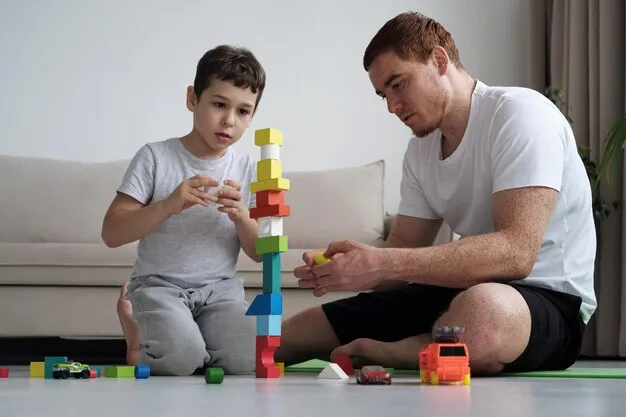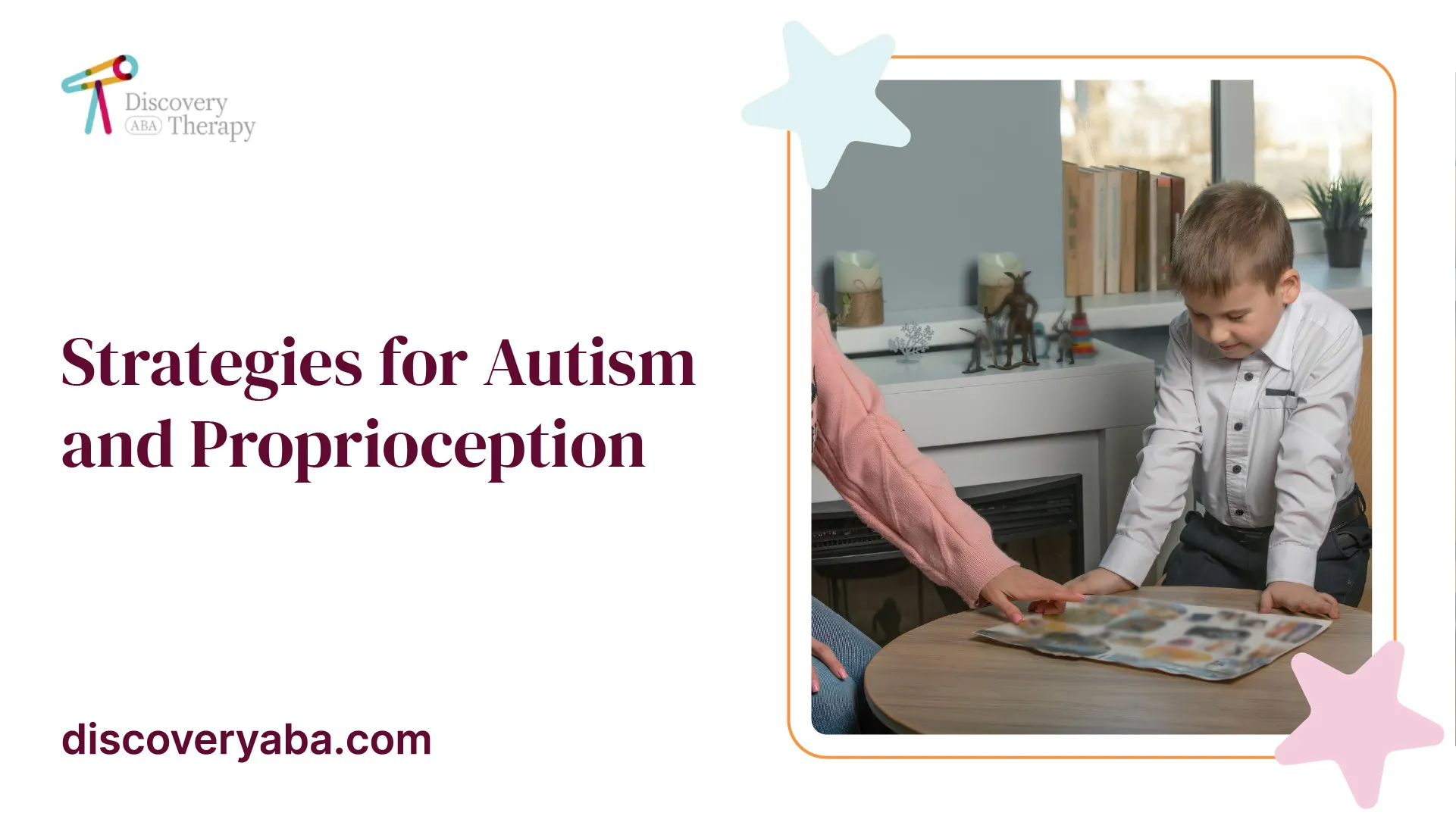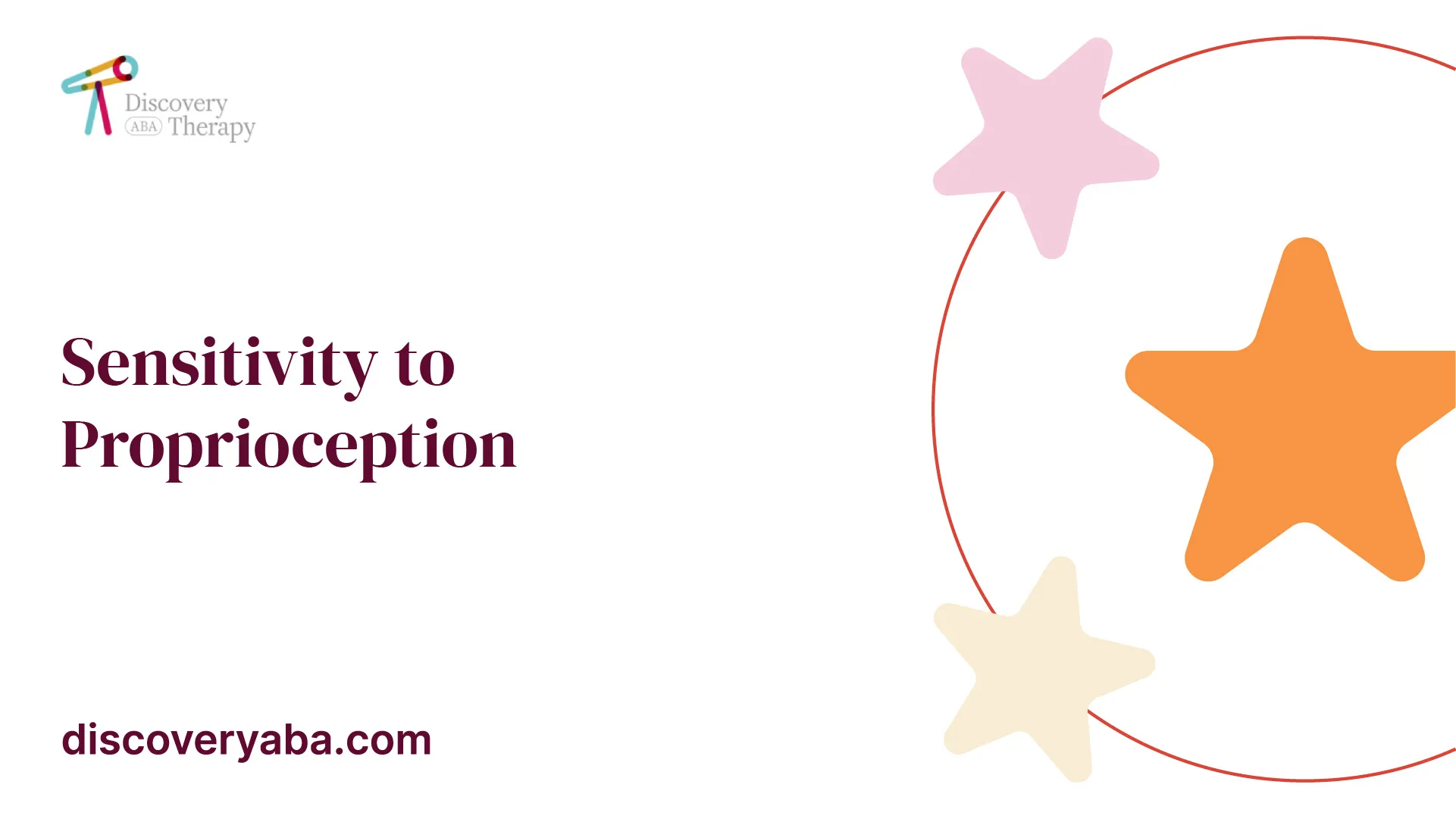Strategies for Autism and Proprioception
Discover autism proprioception strategies to enhance motor skills and support sensitivity in those with autism.

Understanding Proprioception in Autism

The Role of Proprioception in Autism
Proprioception, also known as kinesthesia, is the internal awareness of the body's position, movement, and spatial orientation. It plays a significant role in self-regulation, coordination, posture, body awareness, focus, and speech. For individuals with autism, proprioception is vital as it provides essential information about their body’s position and movement. This sensory input aids in navigating their surroundings effectively and helps to develop body awareness, sense of boundaries, coordination of movements, and upkeep of proper posture [2].
Proprioceptive feedback is crucial for processing and responding to sensory stimuli from the environment. Many individuals with autism seek proprioceptive input to help regulate their emotional and behavioral reactions to overwhelming sensory experiences. This input can lead to calming effects for those feeling overstimulated and increased alertness needed for learning and focus.
Benefits of Proprioceptive Input
The advantages of proprioceptive input for individuals with autism are numerous and significant. These benefits include:
Benefits of Proprioceptive InputDescriptionImproved Body AwarenessProprioceptive activities enhance awareness of body position, helping individuals understand where their body is in space.Enhanced Motor SkillsRegular proprioceptive input contributes to better coordination, balance, and overall motor skills.Emotional RegulationSeeking proprioceptive experiences can help regulate emotions, reducing anxiety and stress.Increased Focus and AttentionProprioceptive activities can aid in creating a state of calm, which allows for improved concentration during tasks.Development of Spatial AwarenessGreater awareness of body boundaries assists in navigation and interaction with surroundings.
Research indicates that improving proprioceptive abilities can enhance sensory processing skills and promote better self-regulation in individuals with autism [3]. Engaging in activities that provide proprioceptive input forms an important element of comprehensive autism therapy best practices. Such activities might include jumping, pushing, or heavy lifting, all of which contribute positively to a child's overall development and sensory integration.

Sensitivity to Proprioception1
Understanding sensitivity to proprioceptive input is critical for families and caregivers of individuals with autism. Many individuals may experience either oversensitivity or under-responsiveness to proprioceptive stimuli, impacting their daily lives and interactions.
Oversensitivity in Autism
Some individuals with autism may be oversensitive to proprioceptive input. This sensitivity can make certain movements or activities uncomfortable or overwhelming. It may lead to difficulties in understanding body positioning in relation to other objects, which can result in clumsiness, accidental knocking over of objects, and misjudging personal space. Individuals facing this challenge may also struggle with regulating pressure, affecting tasks such as writing where excessive force can tear the paper.
With the right support, individuals can learn techniques to manage these challenges effectively.
Strategies for Oversensitivity
There are various strategies that can be employed to help individuals with autism who are oversensitive to proprioceptive input find relief and improve their sensory experiences:
StrategyDescriptionFirm HugsProviding firm hugs can offer deep pressure stimulation that helps regulate sensory experiences.Weighted BlanketsThese blankets provide deep pressure input, promoting relaxation and better sleep. They come in various weights and sizes to accommodate individual needs Gold Star Rehabilitation.Compression ActivitiesEngaging in activities that apply compressive pressure to the body can create a comforting effect. Examples include rolling up in a mat or using a therapy ball.Calming TechniquesTechniques such as deep breathing or mindfulness exercises can help reduce anxiety triggered by sensory overload.
Individuals may benefit from a personalized approach based on their specific needs and preferences. Families may also consider exploring various autism therapy best practices to aid in their strategies.
Weighted blankets, in particular, have gained popularity among individuals with autism. They can help provide a calming and grounding effect through deep pressure stimulation, which aids in regulating the sensory system and promoting a sense of security.
By implementing these strategies, caregivers can support individuals with autism in better managing their proprioceptive sensitivities.

Seeking Proprioceptive Input
Under-Responsiveness in Autism
Individuals with autism may exhibit under-responsiveness to proprioceptive input, characterized by a diminished awareness of their body and movement. These individuals often seek additional sensory stimulation, resulting in behaviors such as jumping, banging objects, or engaging in excessive physical activity. They may also enjoy deep pressure sensations, such as tight hugs or the feeling of weighted items on their bodies [1]. Problems with proprioceptive processing can lead to distinctive patterns of behavior, including pushing others or objects, crashing into things, or tiptoeing, which can affect their interactions and coordination.
Strategies for Under-Responsiveness
To support individuals with autism who are under-responsive to proprioceptive input, incorporating various strategies can be beneficial. Here are some effective methods:
StrategyDescriptionJumping ActivitiesEncourage jumping on a trampoline or jumping in place to stimulate muscle and joint awareness.Deep PressureUtilize tight bear hugs, heavy blankets, or weighted vests to enhance body awareness and comfort.Crashing ActivitiesCreate safe environments for crashing onto soft surfaces, such as cushions or padded areas. This helps provide the necessary input to their bodies.Bumping GamesEngage in activities involving gentle bumping against soft objects or people to stimulate proprioceptive awareness.Resistance ExercisesIncorporate activities that require lifting or pushing heavy items, such as lifting weights or moving furniture.
By integrating these strategies into daily routines, families and caregivers can enhance the sensory experiences of individuals with autism who are under-responsive to proprioception. These activities foster awareness of body movement and can contribute positively to overall well-being. For additional advice on supporting individuals with autism, check our resources on autism therapy best practices and autism therapy goals.
Proprioception and Motor Skills
Understanding the connection between proprioception and motor skills is pivotal for families and caregivers of individuals with autism. Proprioception involves the internal awareness of the body's position and movement, significantly influencing coordination, posture, and overall motor control.
Impact on Coordination
Individuals with autism often experience challenges related to proprioception, which can lead to coordination issues. Difficulties in accurately sensing movement and recognizing joint positions can impact a person’s ability to maintain balance and engage effectively in physical activities.
The table below illustrates common motor coordination difficulties that may arise due to proprioceptive processing challenges:
Coordination DifficultyDescriptionPoor Postural ControlDifficulty maintaining a stable position while seated or standing.Overreliance on ProprioceptionDependence on proprioceptive cues rather than visual cues to gauge body position.Difficulty Matching Proprioception with VisionChallenges in coordinating movements that require both visual feedback and proprioceptive input.Poor Motor AnticipationDifficulty predicting movements, leading to unexpected falls or collisions.Behavior Regulation IssuesDifficulty managing body movements can lead to behavioral challenges during activities.
Addressing these challenges is crucial for enhancing motor skills and overall well-being. For more insight into effective strategies for improving coordination, explore our article on autism therapy best practices.
Developing Motor Skills
Enhancing motor skills in individuals with autism often involves targeted proprioceptive training. This kind of training helps improve body awareness, coordination, and motor control. Activities that stimulate proprioception can lead to better postural control and a more nuanced understanding of body movements [6].
Common activities that can aid in developing motor skills through proprioceptive input include:
Activity TypeExample ActivitiesWeighted ActivitiesCarrying weighted backpacks, using weighted vests during play.Body Awareness ExercisesObstacle courses, yoga, and balance games.Movement-Based PlayJumping on trampolines, swinging, and climbing.Sensory Integration ActivitiesPlaying with play dough, sand, or textured materials to enhance tactile feedback.
Implementing these activities into daily routines can lead to significant improvements in motor skills and coordination for individuals with autism. For further techniques and specific goals, check our resource on autism therapy goals.
Understanding how proprioception plays a role in motor skill development equips caregivers to better support individuals with autism, fostering growth, confidence, and independence.
Proprioception in Therapy
Therapeutic interventions focusing on proprioception can significantly benefit individuals with autism. Understanding the various strategies available in therapy can enhance their ability to navigate their surroundings and improve motor skills.
Proprioceptive Training
Proprioceptive training is designed to enhance the body's awareness of its position and movement. It can be particularly beneficial for individuals with autism, as they often experience proprioceptive processing challenges. Engaging in proprioceptive activities leads to improved strength, balance, and coordination, and can also assist in reducing the risk of injuries such as sprains.
The following table outlines common activities involved in proprioceptive training:
ActivityDescriptionBenefitsWeighted vestsWearing a vest with weightsProvides deep pressure input, promoting calmness and focusJumping on a trampolineBouncing on a trampolineEnhances balance and coordination, increases body awarenessCrawling over obstaclesNavigating through physical challengesImproves spatial awareness and motor planningResistance exercisesUsing resistance bands or weightsStrengthens muscles and enhances proprioceptive feedback
Integrating these activities into a routine can be an effective way to support individual development and address specific proprioceptive needs.
Therapeutic Interventions
There are various therapeutic interventions that aim to improve proprioception and related skills in individuals with autism. These interventions often incorporate a range of strategies and methods tailored to individual needs.
Exercise therapy has gained popularity for treating proprioception disorders, including those affecting many individuals with autism. Such therapy may include:
These therapeutic approaches are aimed at enriching the lives of individuals with autism and can play a crucial role in addressing proprioceptive challenges. For more insights into autism therapy best practices, consider exploring our article on autism therapy best practices. Through consistent proprioceptive training and targeted therapeutic interventions, individuals can achieve remarkable progress in their overall motor skills and sensory processing.
Research on Proprioception in Autism2
Studies and Findings
Current research emphasizes the importance of proprioception in individuals with autism. Proprioception refers to the body's ability to perceive its position and movement in space, which is essential for coordination and balance. Studies have shown that enhancing proprioceptive abilities can lead to improvements in sensory processing and self-regulation for individuals on the autism spectrum. For example, engaging in activities that boost proprioceptive input, like dance or music, has been linked to better spatial awareness and coordination.
A review of proprioception training indicates that such strategies can significantly benefit individuals experiencing proprioception disorders. These strategies are crucial for improving coordination and balance, essential components of overall motor skills development [6].
Study/SourceFindingsWebMDProprioception training enhances coordination and balance.The TreeTopDance and music activities improve proprioceptive awareness and body movements.Gold Star RehabilitationWeighted blankets provide beneficial proprioceptive input, promoting relaxation and sleep.
Proprioception Testing
Testing for proprioceptive awareness in individuals with autism generally involves a series of assessments that measure their ability to perceive body position and movement. Standardized tests may include balance tasks, coordination exercises, and activities designed to monitor sensory feedback processing.
To gauge proprioceptive responses, therapists often employ activities that challenge an individual's ability to control their body in different environments. This can include tasks like navigating obstacle courses, participating in balance exercises on uneven surfaces, or using weighted objects to see how well they can gauge their body position in space.
Additionally, tools such as weighted blankets have been found to assist in enhancing proprioceptive input. These blankets exert deep pressure, which can help individuals with autism better understand their body position and create a calming effect.
Understanding the impacts of proprioceptive awareness on behavioral regulation can inform therapy strategies, allowing families and caregivers to support the developmental needs of individuals with autism more effectively. Techniques such as autism therapy best practices can be integrated with proprioceptive exercises to enhance overall therapy outcomes.
References
[2]:
[3]:
[4]:
[5]:
[6]:
Does Your Child Have An Autism Diagnosis?
Learn More About How ABA Therapy Can Help
Find More Articles
Contact us
North Carolina, Nevada, Utah, Virginia
New Hampshire, Maine
Arizona, Colorado, Georgia, New Mexico, Oklahoma, Texas
.avif)




































































































